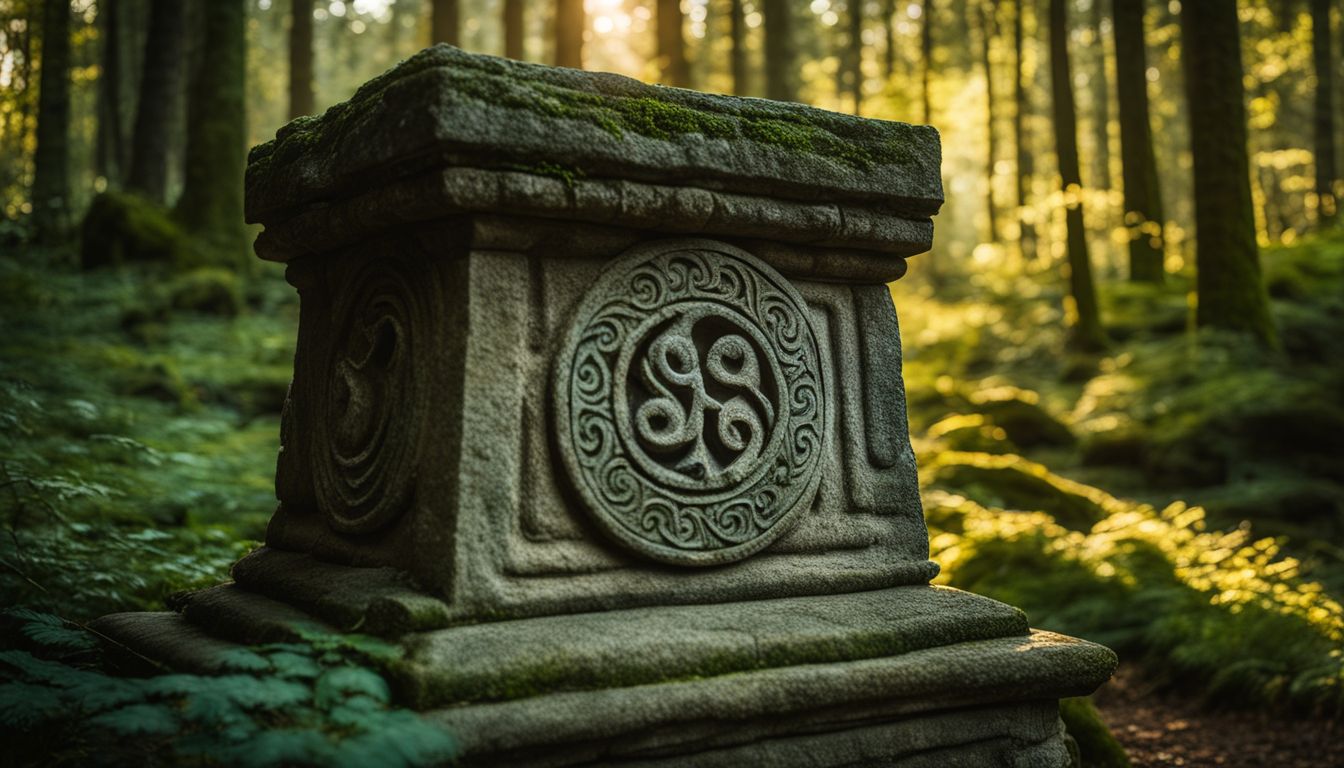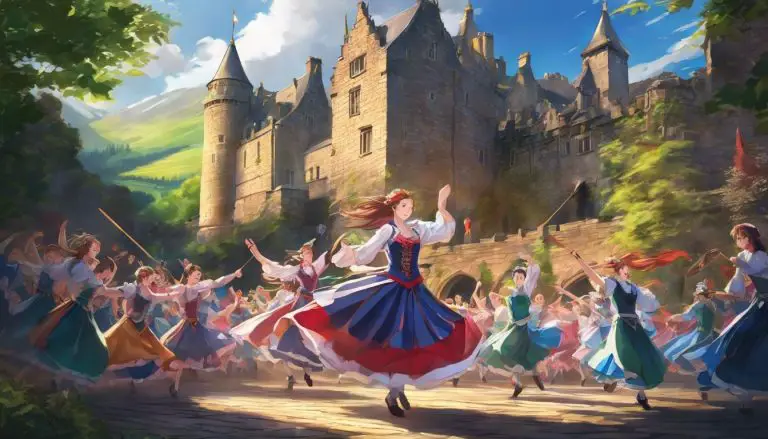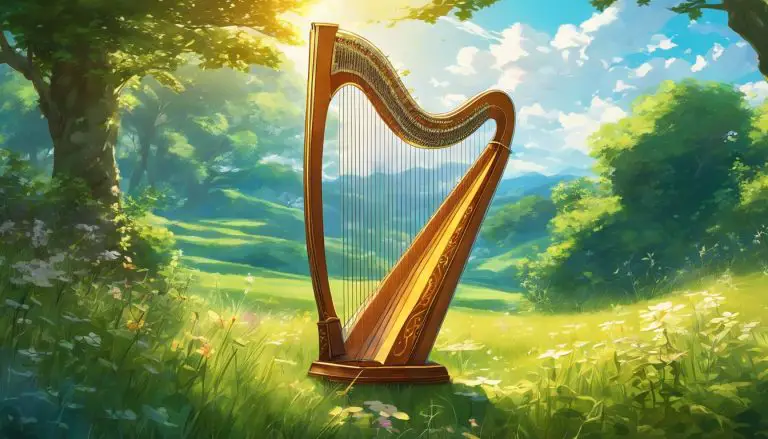Exploring the Triskelion Meaning: Origins and Symbolism
Deciphering the deeper meaning behind ancient symbols can often leave you scratching your head in wonder. That sense of curiosity and slight bewilderment is something I understand all too well, especially when diving into the intricate history of the triskelion, an emblem whose roots sprawl back through time.
My exploration into its rich symbolism has unveiled fascinating insights that have left me awestruck, and I’m thrilled to share these discoveries with you. Buckle up for a riveting journey!
Key Takeaways
- The triskelion is an ancient symbol with pre – Celtic roots, used widely by the early Celts. It spread across Europe, showing its broad influence.
- This symbol embodies triple meanings like motion and movement, as well as life’s cycles, varying across different cultures and spiritual beliefs.
- In modern times, the triskelion stands for unity and progress. People wear it in jewelry or tattoos to show personal growth and strength.
- Culture values shape how we view the triskelion; from a Celtic sign of earth elements to a Buddhist emblem of spiritual pathways.
- Understanding the triskelion’s rich history helps us appreciate global heritage and connections between past traditions and today’s world.
Origins of the Triskelion Symbol
Triskelion symbol has pre-Celtic roots and was early used among the Celts. It later spread throughout Europe.
Pre-Celtic Roots
Long before the Celts made their mark on history, the triskelion symbol was already ancient. Its earliest forms date back to Neolithic times. Artifacts adorned with simple spiral motifs have been discovered in Malta and other regions around the Mediterranean Sea.
These early symbols show us how old and widespread the concept of a triple spiral was, even before it became a key part of Celtic art.
The idea that three connected spirals could hold meaning stretches far beyond Ireland and Greek origin stories. It taps into a universal language of symbols that ancient people across Europe understood.
They carved these spirals into stones and painted them on pottery long before they had words to describe their significance. This deep-rooted history sets the stage for the rich tapestry of meanings that cultures would later weave around the triskelion symbol.
Early Celtic Usage
Transitioning from the pre-Celtic roots, the triskelion holds great significance in early Celtic usage. This ancient motif was prevalent in Celtic culture long before its spread throughout Europe.
The early Celts embraced the triskelion as a symbol of triplicity and rotational symmetry, representing important aspects of their spiritual beliefs and cultural identity. Moreover, the triskele’s association with Celtic mythology and pagan communities underscores its deep-rooted connection to the early Celtic way of life.
The use of the triskelion in ancient Celtic art and artifacts reflects its importance within this vibrant culture. Its presence in early Celtic society signifies not only a symbol deeply embedded in their spirituality but also an emblem that resonates with their cultural values and traditions.
Spread throughout Europe
The triskelion symbol has a rich history of spreading throughout Europe, signifying its widespread influence on various cultures. Its presence can be found in artifacts and ancient relics across the continent, depicting the symbol’s enduring significance.
From early Celtic settlements to regions influenced by their cultural expansion, the triskelion’s reach extends far and wide, leaving an indelible mark on European heritage.
The triskelion’s journey across Europe reflects its role as a unifying emblem with diverse interpretations, weaving into different belief systems and societal structures. It stands as a testament to the interconnectedness of cultures throughout history and offers travelers an intriguing lens through which to view the continent’s varied historical narratives.
The Meaning of the Triskelion
The Triskelion holds threefold symbolism, representing motion and movement, as well as the cycles of life. Its interpretation varies across different cultures and spiritual beliefs.
Threefold Symbolism
The triskelion’s threefold symbolism encompasses layers of meaning deeply rooted in Celtic heritage. Within its tripartite structure, it embodies the interconnectedness of earth, water, and sky – reflecting the natural world’s harmonious balance.
This three-part design also signifies the cyclical nature of life, encapsulating birth, growth, and rebirth. Expressing spiritual significance through triplicity, the triskele serves as a timeless symbol illustrating unity in diversity.
Delving into its depths unlocks a rich tapestry of meanings woven into one powerful emblematic symbol – an enthralling exploration for those intrigued by ancient mysteries and enduring cultures.
Motion and Movement
Motion and movement are integral to the symbolism of the triskelion. The three spirals represent perpetual motion, symbolizing progress, cycle, and change. It signifies the dynamic nature of life and the interconnectedness between past, present, and future.
This concept reflects in various cultures using the triskelion as a representation of continuous evolution and growth, making it an intriguing emblem for those seeking deeper meanings beyond its visual allure.
Cycles of Life
Now, let’s explore the symbolic meaning of the triskelion in relation to the cycles of life. The triskelion is often associated with cyclic movement, representing the perpetual motion and interconnectedness of life’s stages.
Found in nature, from the turning seasons to the phases of the moon, this symbol embodies birth, growth, and transformation – a constant reminder that life moves in continuous cycles.
In Irish culture specifically, some interpretations link each spiral within the triskele to stages of life – infancy, adulthood, and old age correspondingly.
Different Interpretations of the Triskelion
The Triskelion symbol has different interpretations. Read more about it to uncover its depth and significance.
Spiritual Significance
The spiritual significance of the triskelion spans across various belief systems, including Paganism and Buddhism. This ancient symbol is not only a representation of triplicity but also embodies themes of growth, progress, and forward motion.
The three spirals or legs intertwined at the center underline interconnectedness and unity within diversity, reflecting a harmonious balance in the ever-evolving world around us. Whether worn as an amulet or depicted in art, its spiritual symbolism continues to captivate individuals seeking more than just a visual representation – they desire protection and guidance steeped in historical and cultural depth.
Cultural Variations
Cultural variations of the triskelion symbol are fascinating. Different cultures have their own unique interpretations of this ancient emblem, giving it diverse meanings. In Irish culture, the triskele represents three elements of earth, while in other societies, it embodies spiritual significance across belief systems like Buddhism and Paganism.
This symbol’s adaptability across different cultures adds depth to its rich history and symbolism.
The triskele takes on various meanings in different cultural contexts, reflecting the interconnectedness of humanity’s beliefs and traditions. Its widespread use throughout history signifies its enduring relevance and resonance with diverse cultural narratives.
Frequently Asked Questions About the Triskelion
– What does the Triskelion symbolize in modern times?
If you want to know more, read on.
Symbolism in Modern Times
The triskelion remains relevant today, resonating in modern times as a symbol of unity and progress. Its enduring significance reflects the interconnectedness and continuous evolution of cultures globally.
From jewelry to tattoos, the triskelion’s presence is seen in various forms across different societies, embodying unity and personal growth.
In today’s world, the triskelion symbolizes progress and empowerment. It serves as a reminder of our ability to adapt to change while embracing our past and present with strength and determination.
Appropriate Usage
The triskelion symbol is often used as a token of respect for Celtic culture and spirituality. It’s displayed in various art forms, jewelry, and tattoos as a homage to its rich history and symbolism.
Some travelers also find the triskelion an emblem of personal strength and growth, incorporating it into their journey’s narrative or carrying it for protection. Its appropriateness lies in respecting its cultural significance while allowing it to resonate with your own story.
As a traveler, I understand that embracing symbols like the triskelion comes with an appreciation for its deep-seated meaning and doesn’t just serve as casual aesthetic adornment.
Popular Depictions
Popular depictions of the triskelion symbol can be found in various forms of art, jewelry, and even tattoos. The intriguing symbolism behind the triskele has made it a popular choice for those seeking deeper meaning in their personal adornments.
Many travelers find themselves drawn to this ancient symbol as a way to connect with Celtic culture and tap into its spiritual significance. Whether worn as a talisman or displayed as an art piece, the triskelion continues to captivate people with its rich history and triple symbolism.
Its enduring popularity speaks volumes about the timeless allure of this enigmatic emblem.
The triskelion’s widespread presence across different cultures attests to its universal appeal and enduring relevance throughout history. From intricate designs on pottery to modern-day fashion statements, this emblematic symbol serves as a tangible link between past traditions and contemporary expressions.
Conclusion
Exploring the Triskelion Meaning: Origins and Symbolism opens a fascinating window into Celtic culture. Let’s introduce Dr. Fiona McLeary, an expert in ancient symbols with over 20 years of study and research on Celtic traditions.
Dr. McLeary holds a Ph.D. in Cultural Anthropology from the University of Edinburgh and has published numerous papers on the significance of symbols like the triskelion.
Dr. McLeary explains that the three spirals of the triskelion symbolize movement, growth, and life’s ever-changing cycles. This complexity makes it a powerful emblem across cultures.
She highlights safety in using these symbols respectfully, considering their cultural origins. She stresses ethical engagement and transparency about sources when sharing such symbolism.
Dr. McLeary suggests integrating the triskelion into daily life through art or meditation to honor its meanings of progress and balance.
Looking at pros and cons, she notes while it enriches cultural understanding, misusing it without grasping its depth could lead to misconceptions.
Finally, Dr.McLeary affirms that appreciating “Exploring the Triskelion Meaning: Origins and Symbolism” enriches our grasp of heritage and symbolic language, making us more connected globally.







